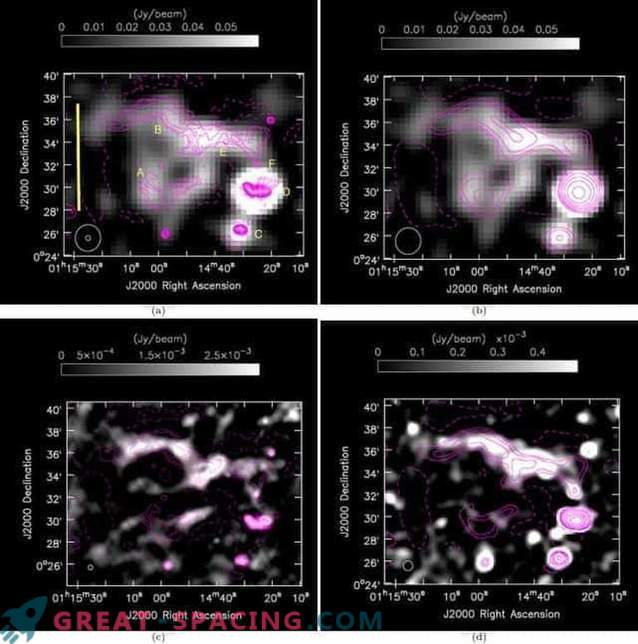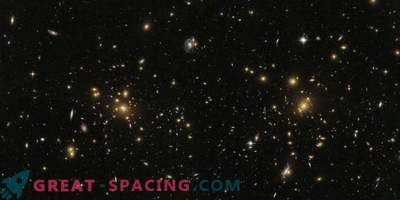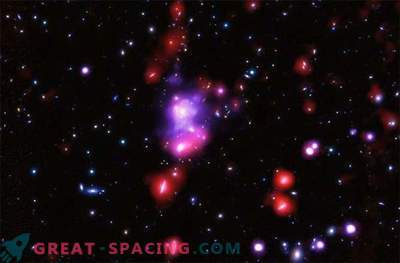
Indian scientists have found two radio relics in the Abell 168 galaxy cluster. This detection can improve our understanding of the galaxy merging process.
Radio relics are diffuse elongated radio sources of synchrotron origin. They are found in the form of spectacular single or double symmetric arcs on the periphery of galactic clusters. Researchers are interested in finding such sources, because their number associated with the blows during the merger remains small.
Abell 168 is a low-mass nearby cluster of galaxies with a red shift of 0.045 and a mass of 152 trillion solar. The first observations of radio emission associated with this cluster date back to 2011. Now scientists are reporting two new radio relics. For fixation, the Indian radio telescope GMRT and the Very Large Antenna Grid (VLA) were used.

Picture of Abell 168 from GMRT
The survey revealed that one of the features is elongated, thin, and located in the northern part of Abell 168 at a distance of 3 million light years from the center of the cluster. It has a linear length of 2.6 million light years, and a width of 260,000 light years.
The second is endowed with a ring shape, and in size - 700000 light years. Located near the inner edge of the first, about 2 million light years from the center of the cluster. In addition, the circular relict (A) has a steeper spectral index of -1.74 in the frequency range 100-600 MHz and seems to be connected to the second source (B). The ring feature may be an ancient plasma, caused by adiabatic compression from the shock wave of the first relic.











































